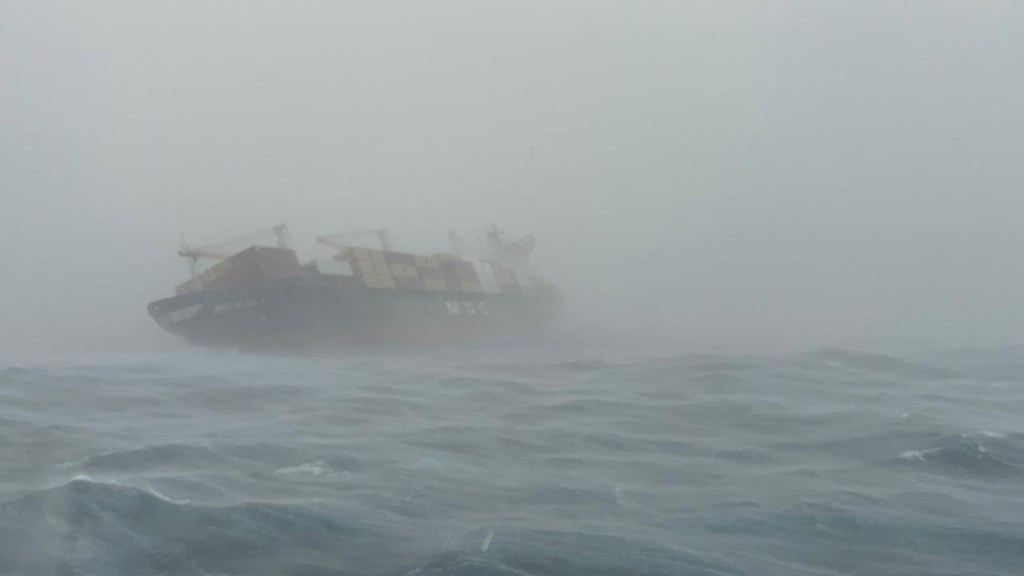A Liberian cargo ship sank off the Kerala coast on Sunday morning — leading to a major oil leak and prompting a statewide alert. The vessel had 84.44 metric tonnes of diesel and 367.1 metric tonnes of furnace oil in its tanks as well as containers carrying hazardous materials. Authorities now remain braced for serious environmental and navigational threats as the leaked fuel continues to drift at around three kilometres per hour.
According to a statement from the Ministry of Defence, MSC ELSA 3 went down with 640 containers on board including many containing hazardous materials. Twelve of these containers held calcium carbide — a chemical that reacts violently with seawater to release highly flammable acetylene gas. The Indian Coast Guard also confirmed that the vessel was carrying Marine Gas Oil and Very Low Sulphur Fuel Oil.
Authorities believe that around 100 containers fell into the sea as the ship capsized on Sunday morning. A high-level meeting was held later in the day to take stock of the situation — with officials opining that the containers were likely to reach the coastal areas of Alappuzha, Kollam, Ernakulam and Thiruvananthapuram.
“As the oil slick can reach anywhere along the Kerala coast, an alert has been sounded across the coastal belt. The containers are drifting in the sea at a speed of 3 km per hour. Besides, the oil in the fallen containers and the marine fuel used in the ship has also leaked. At present, the Coast Guard has deployed two ships and a Dornier aircraft to mitigate oil spilling,” said an official communique from the Kerala Chief Minister’s Office after the meeting.
What is calcium carbide? Is it dangerous?
The colourless solid is formed by heating lime and with coke (calcium oxide plus carbon) in an electric furnace under extremely high temperatures It is also known as calcium acetylide and used primarily to generate acetylene gas — a crucial eaw material in the chemical industry for synthesising various organic compounds as well as steel manufacturing and metal cutting. It is described as a ‘grayish-black lump or crystalline powder with a garlic-like odour’.
According to various health advisories, calcium carbide can irritate the irritate the skin on contact — causing a rash, redness and a burning feeling. It can burn the eyes and potentially cause permanent damage and affect you when inhaled. Higher exposure can also lead to a pulmonary edema.
But the primary concern in this case is the reactive and flammable nature of the compound upon contact with water. Calcium carbide forms the highly flammable gas known as acetylene when exposed to water or moisture. The reaction releaes a significant amount of heat andThe reaction releaes a significant amount of heat as well as calcium hydroxide. The latter can also increase the alkalinity of water and disturb aquatic ecosystems in the area.

